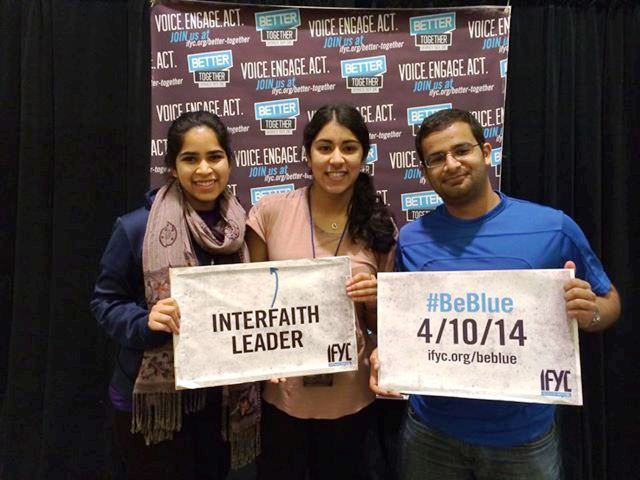Storytelling: IFYC Interfaith Leadership Institute
“I’m going to tell you a story.”
Over the course of three days at the Interfaith Leadership Institute, which was hosted by the Interfaith Youth Core in Atlanta, GA, I heard this phrase more times than I could count on two hands. I heard everyone’s stories: from the founder of IFYC, Eboo Patel, to the other student participants, to the IFYC staff, trainers and Better Together coaches, to the faculty and staff ally participants, and even the shuttle driver that took me from the Hartsfield-Jackson airport to the conference center shared his story from Atlanta’s winter weather episode that happened earlier in the week.
 In-person storytelling has a power unlike any other form of communication, and the world has taken notice of the impact of stories. The rise of TED talks and independently organized TEDx events, where people share their personal stories with an audience of strangers, exemplifies this fact. During this conference, I learned the importance of finding my own interfaith story. When I thought back on my experiences, I realized that it was through telling my own personal story that I became interested in interfaith work at Georgetown in the first place. During the first semester of my freshman year at Georgetown, I was placed in a School of Foreign Service Proseminar with Rabbi Harold White, who was hired in 1968 as the first full-time Jewish chaplain at any Catholic university. The class was about wisdom literature, and we spent a lot of time reading and discussing the Old Testament. It was also in that class when I was asked for the first time to reflect on my religious upbringing through a midterm paper that asked me to discuss how the material we had been learning in class has assisted me in dealing with my own family dynamics. That paper not only allowed me to reflect on my life and the Hindu tradition that I was raised in, but it also made me think about what I wanted my religious life to look like during my four years at Georgetown. It was through that class that I began to understand the power of religion, and more broadly of interfaith dialogue, to help us build and sustain connections with the people around us.
In-person storytelling has a power unlike any other form of communication, and the world has taken notice of the impact of stories. The rise of TED talks and independently organized TEDx events, where people share their personal stories with an audience of strangers, exemplifies this fact. During this conference, I learned the importance of finding my own interfaith story. When I thought back on my experiences, I realized that it was through telling my own personal story that I became interested in interfaith work at Georgetown in the first place. During the first semester of my freshman year at Georgetown, I was placed in a School of Foreign Service Proseminar with Rabbi Harold White, who was hired in 1968 as the first full-time Jewish chaplain at any Catholic university. The class was about wisdom literature, and we spent a lot of time reading and discussing the Old Testament. It was also in that class when I was asked for the first time to reflect on my religious upbringing through a midterm paper that asked me to discuss how the material we had been learning in class has assisted me in dealing with my own family dynamics. That paper not only allowed me to reflect on my life and the Hindu tradition that I was raised in, but it also made me think about what I wanted my religious life to look like during my four years at Georgetown. It was through that class that I began to understand the power of religion, and more broadly of interfaith dialogue, to help us build and sustain connections with the people around us.
So, when I was asked at the Interfaith Leadership Institute in Atlanta this past weekend to tell my interfaith story, I thought back to the experience of writing that paper and being in that class. The trainers at the Institute taught us one way to frame our stories, which was to look at the story of self, of us, and of now. This allowed us to frame our stories to answer the questions of why we are motivated to do interfaith work, what values in our community should motivate our community to do interfaith work, and why interfaith work is important to do now. Through this framework, I was able to realize how much my interfaith story has grown over the past two and a half years at Georgetown. At the opening ceremony, Eboo Patel told us a story, and then followed the story with the comment that no matter how many times he has told that particular story, he has never told that story in the same way twice. That’s the beauty of a story: you discover something new every time you tell it. My interfaith story is constantly changing and will continue to evolve as I do, but now I have the tools to share it effectively with those around me.
Trishla Jain , SFS ’15